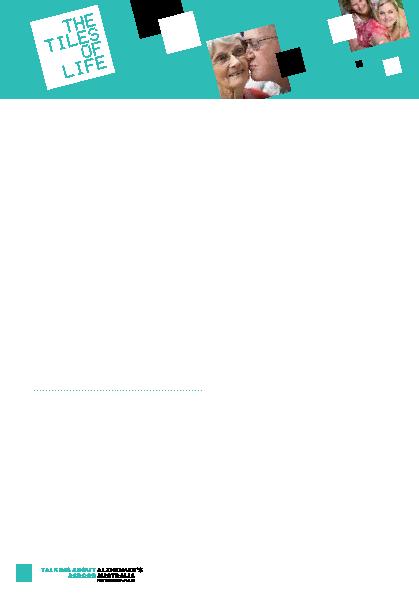
and respite, and; service models to facilitate
quality of life, community living and
minimisation of risk of premature entry to
residential aged care.
support services for people with younger onset
dementia and their families was developed by
the research team. It outlines a vision for best
practice in service provision for younger onset
dementia, underpinned by principles to guide
best practice. The framework also identifies
key areas of concern and proposes a range of
strategies to support policy makers and service
providers in developing appropriate services for
people with younger onset dementia and their
families.
the research findings, highlight the implications
for policy makers and service providers, and
encourage the promotion and creation of
flexible and innovative services to best support
people with younger onset dementia and their
families.
Recreation Officer
Jenny Nel
Occupational Therapist
aged care facility and converted it to Carrara
Health Centre. It is a 63 bed sub-acute facility
formed in response to the Gold Coast's Interim
Demand Strategy. 31 Beds are designated
to the Geriatric and Evaluation Management
service. Typically clients on this ward have
and experience wandering, restlessness,
agitation and anxiety.
Outdoor areas were not safe or therapeutic for
them to access. The aim was to provide access
to an outdoor area to help decrease these
behaviours; and therefore reducing the use of
physical and/or chemical restraints, optimising
occupational performance and quality of life.
causes:
Previous experience, literature reviews and
reviewing the Dementia Design Guidelines
formed the foundation of a project to redesign
an existing courtyard into a Sensory Garden.
landscape architect was utilised to design
a garden featuring sensory stimulation and
functional design.
In a very short time the Sensory Garden proved
to be successful as evidenced by client's
participation in purposeful activities in the
garden. Specific case studies will demonstrate
this during the presentation.
Garden was completed in April 2011
in managing the behaviours of these clients,
by allowing access to a safe and appropriately
stimulating environment the garden is
operational and patients actively engage in
therapeutic activities. Project was completed in
September 2011
Funding for the project was a challenge and
stakeholders had to be creative towards raising
money.